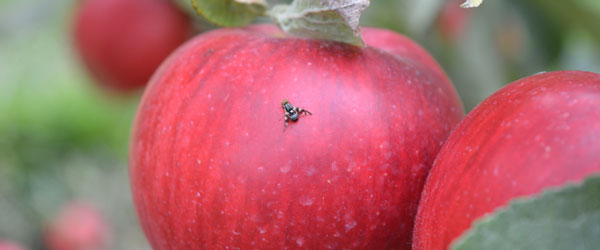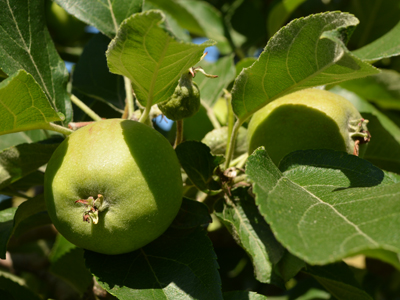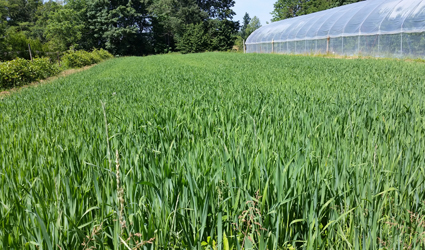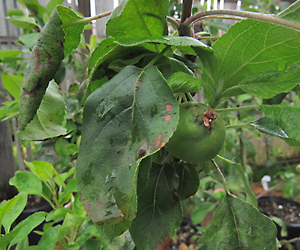
Apple Maggot Update
We’ve had several customers call after noticing that their apples (or pears) have apple maggot in them this year. The most asked question is, “What can I do now to prevent this from happening next year?” We’ve posted in the past how to time sprays for apple maggot. Unfortunately, if you’re using organic controls, it only […]
European Pear Harvesting
We’ve posted before about timing harvest of pears and apples, how to tell when they are ripe, when to pick, and how to store. As summer ends and fall begins, we are ramping up the harvest of pears and apples at Cloud Mountain. Every year, we are asked how to tell if pears are ready […]

Thinning Season
We’ve posted on this topic before, but it is worth saying again how important it is to thin the fruit on your fruit trees. Typically, most trees set much more fruit each spring than they have the energy to ripen. By thinning the fruit while it is small, you direct the tree’s energy into the […]

Summer Cover Crops
Most folks know that winter cover crops like rye and vetch can be a huge benefit to their soils. Winter cover crops benefit their crops by providing soil cover to prevent erosion, keep valuable nutrients cycling through the microbiome below the soil surface, suppress weeds, fix nitrogen for spring plantings, and provide a break in […]

Results of a Cold, Wet Spring
Many fruit trees are starting to show the signs of a cold, wet spring. Our first indication of the weather showed up on peach trees, in the form of peach leaf curl. Established trees of leaf curl resistant varieties like Frost, Avalon Pride, and Betty showed much more leaf curl than normal this spring. Non-resistant […]
High Tunnels- Training Tomatoes
At Cloud Mountain Farm Center, we grow about a thousand tomato plants each year in our high tunnels. All of the varieties we grow are indeterminate varieties, meaning they are varieties that continue to grow and produce over a long season, rather than setting all of the tomatoes at once. Because of our cool summers […]
